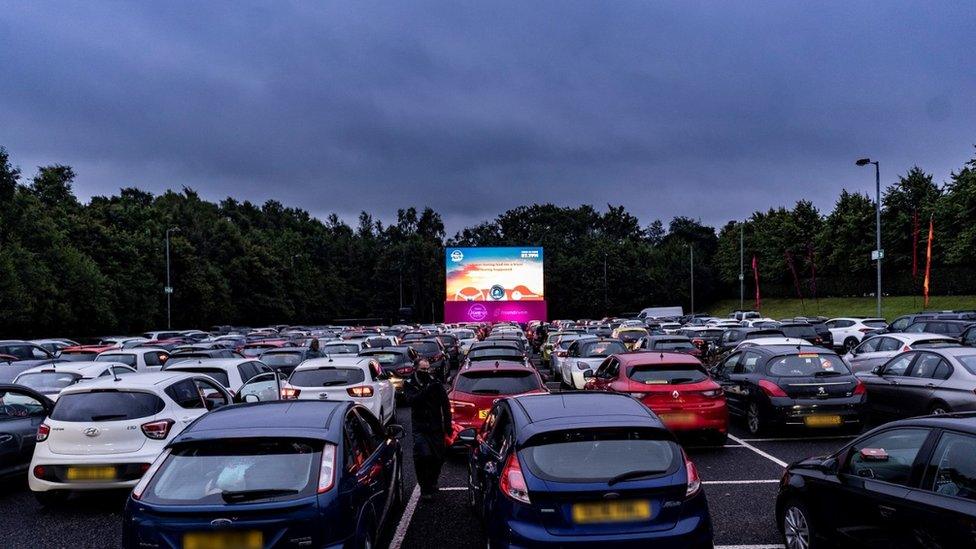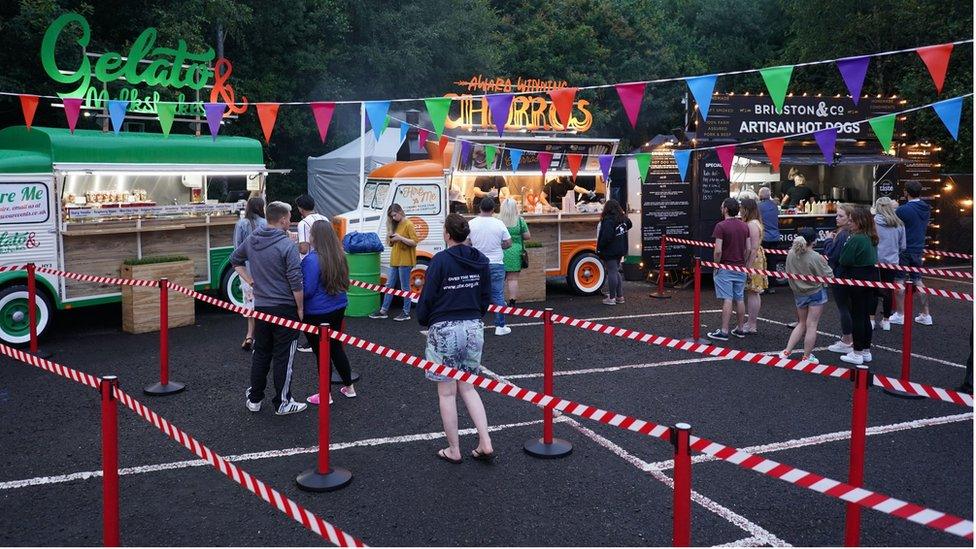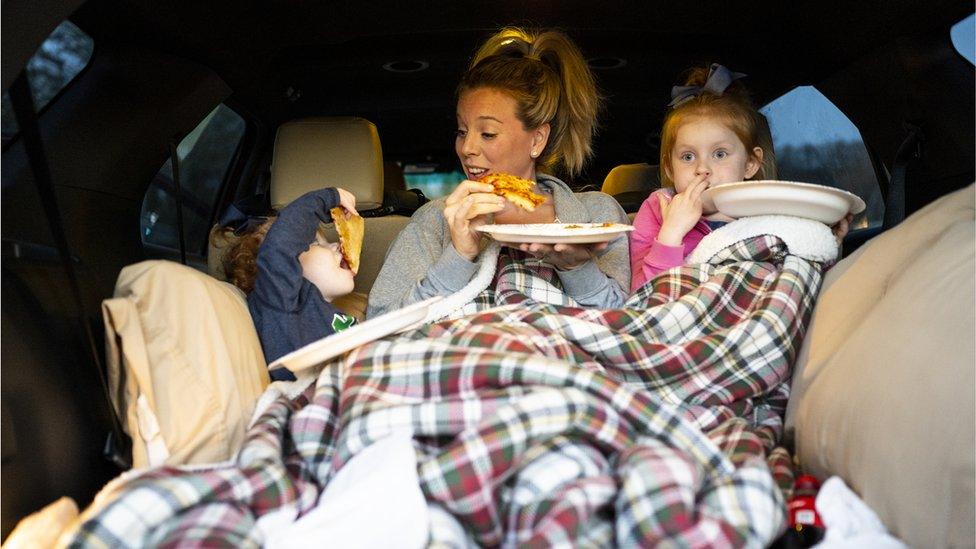No gleaming Cadillacs as Scotland goes to the drive-in
- Published

Scotland is fairly new to "drive-in" culture, but with cinemas still closed or suffering from Covid restrictions, it has become a popular way to get out to the movies.
I first went to a drive-in in Scotland seven years ago.
To be honest, it wasn't quite the scene I imagined from watching classic US films such as Grease.
There were no gleaming Cadillacs with the hoods pulled down, packed full of preening teenagers with eyes on each other rather than the film.
Socially distanced entertainment
Think instead of a Ford Focus, packed full of noisy eight-year-olds.
The film was a special Halloween screening of Ghostbusters. It was the middle of the day and we had to squint to see the screen whenever the sun came out.
But all in all, it was a good start to the Scottish drive-in experience by events organiser Oli Norman, and his company Itison. So it was no surprise to hear he had planned a programme of movies in Scotland this summer.

There are socially distanced queues for snacks and drinks
Where else can you enjoy socially distanced entertainment with like-minded people - where you can safely go out, while comfortably staying in?
Although the truth is the level of comfort depends on your car. Those American convertibles were made for lounging in, British cars, less so.
We arrived for our screening of 1980s coming-of-age film Stand By Me with 45 minutes to spare and were guided by stewards into the centre of the car park at Lomond Shores.
Flash our hazard lights
It feels strange to be this close to other people, even if they are safely shielded in their own cars.
But we all tread carefully, leaving our cars only to buy food from stalls at the back of the park, or to use the portable loos, which were being scrupulously cleaned between visits by one very industrious lady.
The staff were all masked and we were encouraged to stay in our cars as much as possible.

There was a little bit of audience warm-up, and some in-car karaoke, but the only sense we had of being part of a shared audience was when organisers asked us to flash our hazard lights.
The whole car park bursts into light.
You can see why comedians might find the drive-in concept problematic for performing their acts.
It would be a bit like yelling jokes into a car park, to a deafening silence. A flashing indicator light doesn't really cut it.
Dirty windscreen
The soundtrack for Stand By Me was relayed to our cars on the radio. It's an important development.
The original American drive-ins would have played the sound on loudspeakers only, meaning it's drowned out by rain, and other noise.
This is essentially surround sound, each little cinema bubble only as good as the people in it.
Having stretched into a 6ft-plus teenager, my son was keen to keep the car to himself, for the space and the quiet.
At £30 a car, that's not an option everyone will be able to afford, and then there's those who don't have a car at all.
Itison, and other companies, promise future plans that will take those customers into account.
For now, my only concern is a dirty windscreen, and dive-bombing seagulls, both resolved by the end of the film.
And before we knew it, we were being told to drive out, not drive in.
The exit was very efficient and happened so fast we missed the end credits of the film.
Drive-in culture has increased dramatically in the US, where it has been part of the fabric of life for more than a century.
In Scotland there are many more projects planned for coming months, from cinema to music, comedy to variety theatre.
Will it be around forever? Probably not.
It's not for everyone and doesn't work for every art form.
Like so many post pandemic ventures, it flies in the face of environmental campaigns but for the moment, staying in your car, is the new going out.